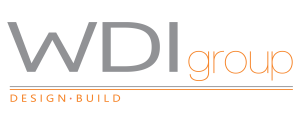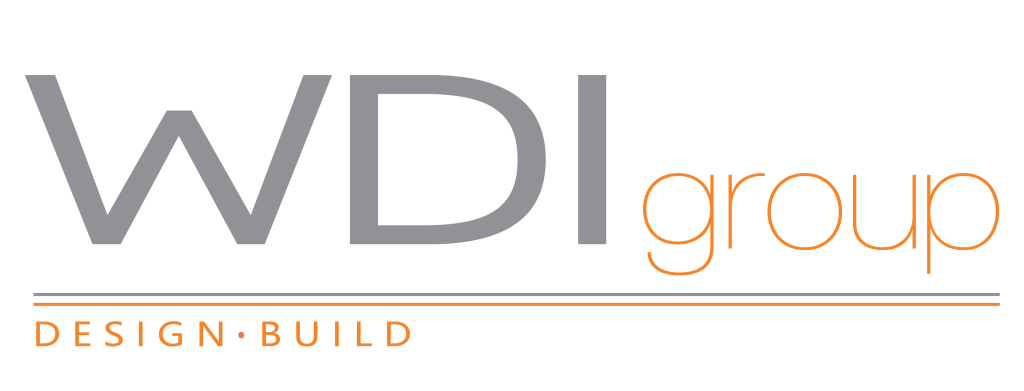Eco-Friendly Practices in Interior Design: Sustainable Office Design Space
In today’s workplace, environmental awareness is a business imperative.
Employees, clients, and leadership teams alike are seeking out workspaces that reflect sustainable values, healthier environments, and long-term efficiency.
In fact, a global study by Human Spaces found that employees in workplaces incorporating natural elements reported 15% higher well-being, were 6% more productive, and 15% more creative. These numbers may be an eye opener for some, which is great, because now we are paying attention!
At WDI Group, we specialize in helping businesses create spaces that reflect these values. In this post, we’ll explore how eco friendly interior design practices are shaping the future of the workplace and how your business can benefit.
What Is Eco Friendly Interior Design?
Eco friendly interior design is the practice of designing indoor spaces in ways that minimize environmental impact while enhancing the health and well-being of the people who use them.
In office settings, this means:
- Choosing sustainable, non-toxic materials
- Designing layouts that optimize natural light and airflow
- Incorporating biophilic elements like plants and water features
- Reducing energy and water consumption
- Reusing or upcycling existing furniture and materials
Eco friendly interior design and sustainable office design often go hand in hand. Both aim to create long-lasting, adaptable spaces with minimal environmental harm.
The distinction lies in scope: eco friendly design focuses on the materials and methods, while sustainable office design encompasses broader planning, like space use and operational efficiency.
Why Sustainable Office Design Matters
Here’s why smart organizations across Canada are embracing sustainable office design:
1. Boosts Employee Well-being
Like we have touched on before in our articles, workspaces that include natural light, greenery, and clean air contribute to lower stress and higher job satisfaction. This is particularly relevant in hybrid work environments, where employees need a reason to return to the office.
2. Enhances Productivity
Natural materials and ergonomic layouts are proven to reduce fatigue and increase focus. This means a green office both feels better and performs better!
3. Reduces Operating Costs
Energy-efficient lighting, HVAC systems, and water-saving fixtures all reduce long-term expenses. Plus, a well-insulated space with smart climate control reduces dependency on heating and cooling.
4. Aligns with ESG Goals
Stakeholders, investors, and government regulators increasingly expect companies to demonstrate Environmental, Social, and Governance (ESG) leadership. Your office is a powerful way to show real action.
5. Attracts Top Talent
Millennial and Gen Z professionals actively seek out companies with sustainable values. An eco-conscious office environment supports recruitment and retention.
Core Elements of Eco Friendly Office Design
Designing a green workspace doesn’t mean starting from scratch. It means making strategic, responsible choices from floor to ceiling. Here are the foundational pillars of an eco friendly office:
a) Sustainable Materials
- Recycled or Upcycled Furnishings: Sourcing desks, seating, and decor that avoid landfill and reduce demand for new materials.
- FSC-Certified Wood: Ensures that timber products come from responsibly managed forests.
- Low- or No-VOC Paints: Improve indoor air quality and reduce exposure to harmful chemicals.
- Natural Fibres: Wool, bamboo, and hemp are excellent alternatives to synthetic textiles.
Tip: Opt for modular furniture that can be repurposed as needs change. This reduces waste and adds longevity.
b) Energy Efficiency
Reducing energy consumption is central to sustainable office design. Consider integrating:
- LED Lighting: Uses up to 75% less energy and lasts 25x longer than incandescent bulbs.
- Daylight Sensors: Adjust artificial light levels based on natural sunlight.
- Smart Thermostats: Optimize temperature control based on occupancy and time of day.
- Energy Star Equipment: Laptops, printers, and appliances that use less energy without sacrificing performance
c) Indoor Air Quality & Biophilic Design
Poor indoor air can decrease cognitive performance and increase sick days. Improve it through:
- Air-Purifying Plants: Like snake plants, spider plants, or peace lilies.
- Ventilation Systems: With HEPA filters or energy recovery ventilation (ERV).
- Natural Materials: Avoid synthetics that off-gas toxins.
- Biophilic Design: Incorporate nature through textures, colours, and views to the outdoors.
d) Acoustic and Spatial Planning
Eco friendly design doesn’t just look sustainable, it also feels comfortable.
- Cork or Wool Acoustic Panels: Absorb sound naturally and are biodegradable.
- Zoned Layouts: Use space efficiently and reduce resource duplication.
- Natural Light Maximization: Open layouts with glass partitions improve daylight access.
e) Waste Reduction & Circularity
Reducing waste is essential to both environmental goals and cost savings.
- Material Reuse Plans: Refinish existing furniture, repurpose old boards or panels.
- Smart Procurement: Buy durable items with end-of-life recycling in mind.
- Digital Signage and Paperless Workflows: Reduce paper use and print-related energy.
Certifications & Standards for Green Offices in Canada
Canadian businesses can align their workplace with recognized green building standards. These frameworks not only validate your commitment but often lead to long-term value and rebates.
LEED (Leadership in Energy and Environmental Design)
- Focus: Building performance, materials, energy use
- Certification levels: Certified, Silver, Gold, Platinum
- Managed by the Canada Green Building Council (CaGBC)
WELL Building Standard
- Focus: Health and well-being of occupants
- Emphasizes air, water, nourishment, fitness, light, comfort, and mind
Fitwel
- Focus: Health-promoting strategies across various building types
- Known for ease of implementation and cost-effectiveness
BOMA BEST
- Focus: Sustainability performance of existing buildings in Canada
- Benchmarking tool for commercial office buildings
WDI Group can guide your team through material selection and spatial planning that align with any of these standards.
Budgeting for Sustainable Office Design
There’s a common myth that sustainability costs more. The reality? Eco friendly interior design often saves money over time.
Here’s how:
- Reduced Energy Bills: Smart lighting and HVAC can cut monthly costs by 20–40%.
- Durable Materials: Natural and reclaimed materials last longer with lower maintenance needs.
- Fewer Retrofits: Planning for flexibility means less future disruption.
- Canadian Rebates and Grants: Programs like Natural Resources Canada’s Greener Buildings Strategy may offer financial incentives for sustainable upgrades.
The Future of Eco Friendly Office Design
If it isn’t already clear from what you have read above, the workplace is changing. Among a few trends, eco friendly practices are shaping what’s next.
Circular Design
Furniture and materials are being designed for disassembly and reuse, supporting a “closed loop” system that eliminates waste.
Tech-Integrated Sustainability
Sensors monitor air quality, occupancy, and energy use in real time, allowing workplaces to adapt intelligently.
Flexible and Modular Spaces
Workstations that shift easily with team needs reduce the need for full renovations and material waste.
Remote-Ready Design
With hybrid work here to stay, office designs are reflecting minimalism, collaboration zones, and smart storage, all with sustainability in mind.
Next steps
Eco friendly interior design isn’t just about what looks good and trendy. It’s about what works better for you, your team and the environment as a whole.
Canadian businesses are realizing that a well-designed space can improve well-being and productivity, cut down on waste and costs and demonstrate a commitment to climate responsibility
At WDI Group, we help businesses turn that vision into reality. From sustainable space planning to sourcing green materials, we guide you every step of the way.
Ready to Design a Sustainable Office?
Whether you’re planning a new build, renovation, or a simple office refresh — our team can help.
Contact our team today for a no obligation conversation about your workplace. Let’s build a future that works for you, your people and the planet.

